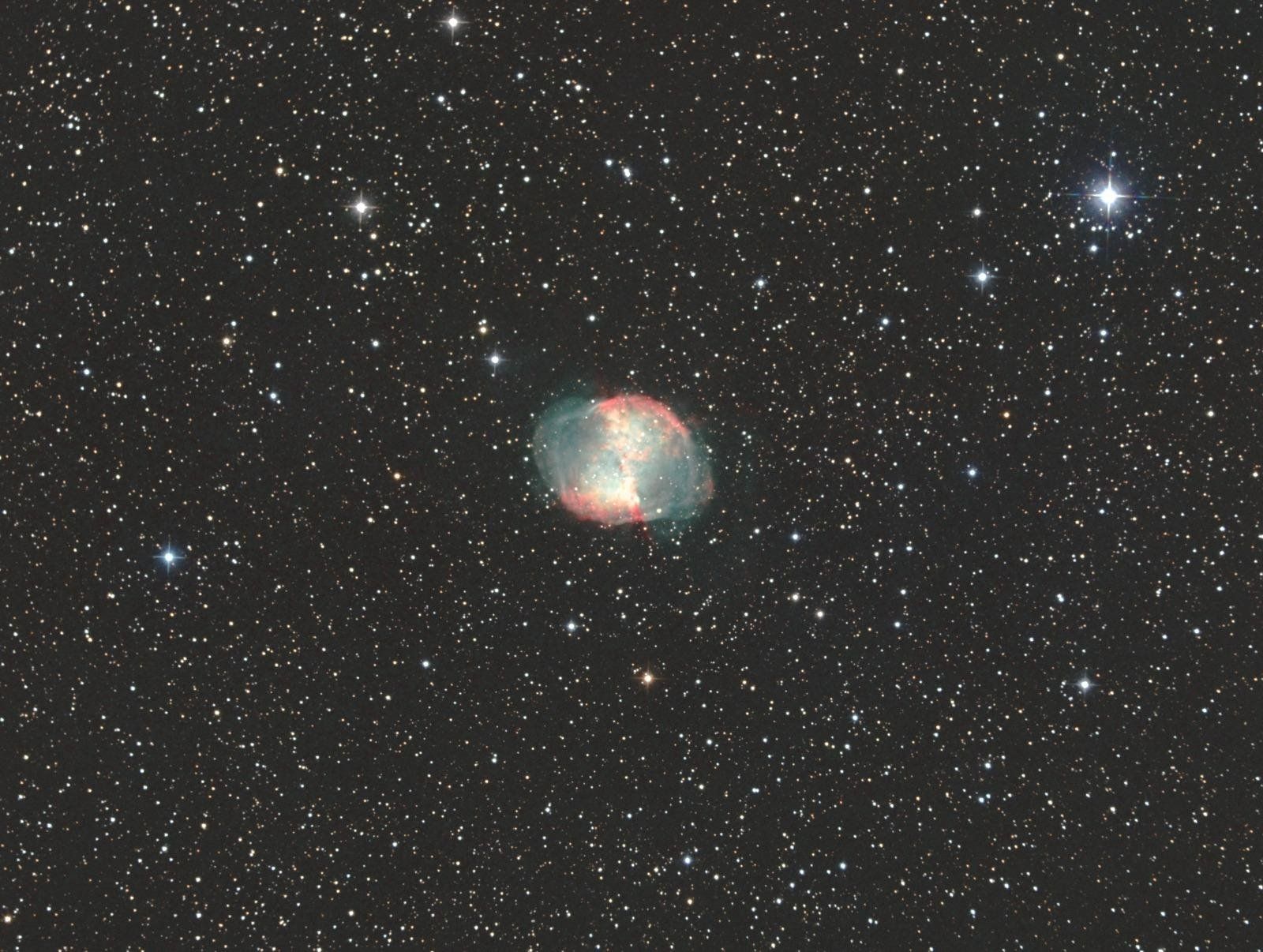DSO of the Month
Messier 27
AKA: Dumbbell Nebula; NGC 6853. Position: 19 hr 59.6 min 22 deg 43 min 16 sec
Due south at 23:22 (BST) on 15 August
Image of M27 by HAS Member Les Brand. Used with permission.
Most planetary nebulae are small and fairly dim: M57, last month’s DSO of the Month in July 2020, is a good example. As they are also rare, since they are the mayflies of the Cosmos, this can make observing them in a small telescope rather frustrating. However, there is one major exception, namely M27 or the Dumbbell Nebula in the otherwise insignificant constellation of Vulpecula. The Dumbbell Nebula is big, being about 8 arcmins at its widest or about a quarter of the width of the Moon. It is also fairly bright with an apparent magnitude of 7.5. This means it can be seen in large binoculars as well as a small telescope. The only problem is locating it easily. It lies just above the small dart-like constellation of Sagitta and close to the right-hand or western edge of the Summer Triangle, roughly half way between Vega and Altair. It is also roughly half-way between Gamma Cygni (Sadr) in the middle of the Northern Cross and Altair. It is also on the same level as the Coathanger asterism and roughly five degrees to the left (or east). It was discovered by Charles Messier in 1764 and hence was the first planetary nebula to be discovered although Messier had no idea of its nature. However in 1784 William Herschel realised that it was a planetary nebula. But it posed a problem for him. He believed all nebulae were made up of stars. He could see a few stars in the region of M27 but not many. He therefore argued that M27 must be very far away and if it were closer, we would see more stars. Actually M27 is distant, but not that distant, it is in fact 1,360 light years away. Of course like the other planetary nebulae, it is a bubble of gas round a white dwarf created by the explosion of the red giant precursor and it is laminated by the radiation given off by the still hot white dwarf. But what gives the Dumbbell nebula its strange appearance? There is a circumstellar band of material round the white dwarf which forces the expanding gas above or below the disk, creating the two bubbles we see. The diameter of the nebula is about 3 light years and it is about 9,800 years old or roughly half-way through its short life. The name Dumbbell nebula was given to M27 by William Herschel’s son John in 1828. Personally I think the alternative name of the Apple-core Nebula is more accurate. Visually it lacks the colour one sees in images and it looks like two grey triangles which overlap at their peaks, but it is quite unmistakeable and easy to see.
ARCHIVE
